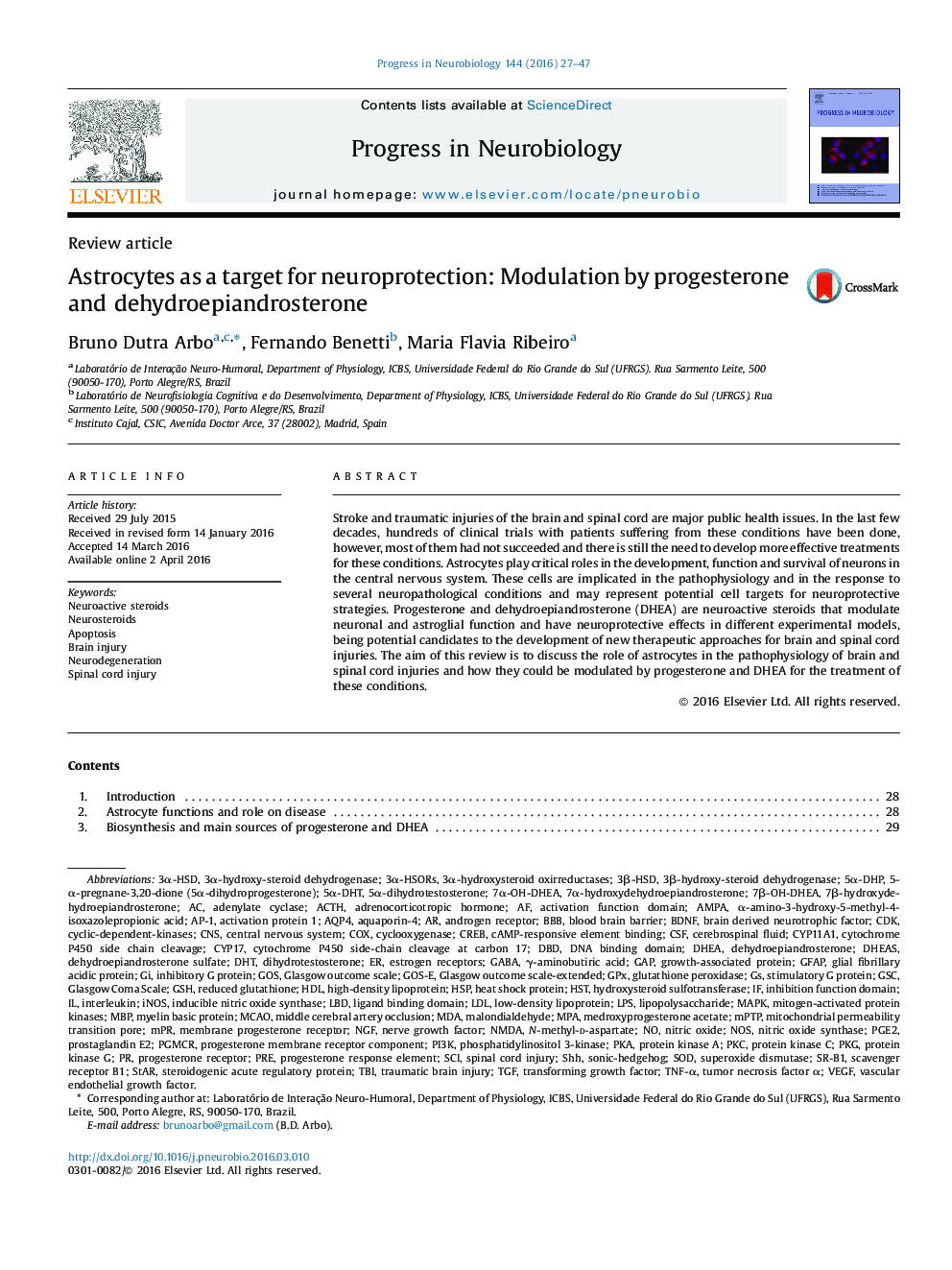| Article ID | Journal | Published Year | Pages | File Type |
|---|---|---|---|---|
| 4353209 | Progress in Neurobiology | 2016 | 21 Pages |
•Brain and spinal cord injuries major public health problems.•Astrocytes are implicated in the pathophysiology of several neuropathological conditions.•Progesterone and DHEA have neuroprotective effects in different experimental models.•We discuss how progesterone and DHEA could elicit neuroprotection through the modulation of astrocytes.
Stroke and traumatic injuries of the brain and spinal cord are major public health issues. In the last few decades, hundreds of clinical trials with patients suffering from these conditions have been done, however, most of them had not succeeded and there is still the need to develop more effective treatments for these conditions. Astrocytes play critical roles in the development, function and survival of neurons in the central nervous system. These cells are implicated in the pathophysiology and in the response to several neuropathological conditions and may represent potential cell targets for neuroprotective strategies. Progesterone and dehydroepiandrosterone (DHEA) are neuroactive steroids that modulate neuronal and astroglial function and have neuroprotective effects in different experimental models, being potential candidates to the development of new therapeutic approaches for brain and spinal cord injuries. The aim of this review is to discuss the role of astrocytes in the pathophysiology of brain and spinal cord injuries and how they could be modulated by progesterone and DHEA for the treatment of these conditions.
